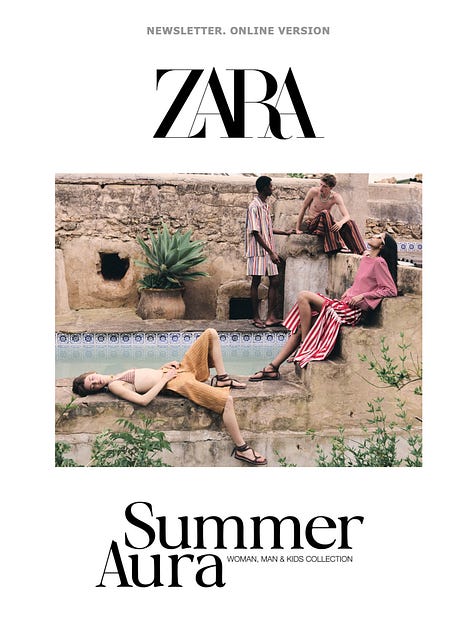Retail Lab: How High-Low Fashion Became an In-House Strategy
Fashion shoppers are looking for ways to flex their creativity and create unusual and unexpected outfit combinations that are fun and full of personality. Enter high-low fashion.

Fed up of repeating the same tired outfits, modern shoppers are committed to looking for items that just do more, whether it’s a vintage belt that adds a pop of texture to a monochrome outfit or a designer silk scarf draped just so to elevate a basic shirt. These styling tweaks are having a moment because they add interest and a hint of the unexpected, which gets people asking “where did you get that from?”
That’s the sweet spot that high-low dressing occupies.
Customers are searching for ease, looking to buy dresser pieces alongside their casual basics to make it simpler to elevate the everyday, and this is the gap savvy retailers are filling by simultaneously offering high, low and something in the middle ranges to their customers.
Here’s why it works for retailers.
Customers are multi-faceted and it makes strategic sense to cater to their different needs.
Plus, offering tiered price points has commercial benefits:
Builds loyalty and repeat purchases- customers won’t shop elsewhere if their favourite brand does everything they need;
Fosters trust by showing a deep understanding of what else the core customer wants;
Increases recommendations - no one should underestimate the power of a conversation between friends that involves the phrase “did you know they do this?”
Feels unexpected in a good way because bringing high-low fashion in-house creates a compelling and well-rounded offer that increases the opportunity for add-on sales and the value of the overall proposition;
Creates variety - customer attrition is complicated and expensive; it’s easier to upsell to people who already know you;
Presents the perfect way to trial new fabrics, design techniques, colours and suppliers. Customers are expecting more and this is a great risk-free way to trial new ideas and get creative;
Limited edition feeds in to the scarcity marketing that fuels temptation and compels shoppers to hit “buy” faster (side note- the importance of temptation in retail isn’t talked about enough)
Customers are looking for ways to get dressed up again.
Atheisure has its place (and it’s going nowhere) but events are back in a big way and people are shifting to a more elevated aesthetic even for their everyday options.
Looking at this from a customer standpoint, we’re taking care of ourselves in different ways and we want to look and feel good, but investing in pieces from unknown brands feels like a big step.
“Will it fit?” “Will it work?” “Will it last?”
These purchase-questioning questions are taken out of the equation with what I call the “product elevation strategy” of these brands and retailers:
Mango, through their capsule collections and collaborations, are upselling to their own customer base, tapping in to their desire for more formal and luxurious pieces, tempting shoppers to spend more with them, rather than going elsewhere.
Mint Velvet - “Relaxed Glamour” is their overall product strategy, but by separating out their MV Limited and Studio collections, Mint Velvet has created a high-low option for the customer that shows them what else is possible with fabrics and fit for occasionwear.
Zara uses high-low offers to tap in to storytelling in a subtle way that also adds structure to their vast product offering. Case in point: the Summer Aura collection with its affordability perfectly complements the Studio Collection that has a higher price point . By using an editorial structure the Summer Aura capsule collection is presented like a summer dream, evoking excitement and a feeling of relaxation, whereas the Zara Studio collection has more refined pieces for dressier occasions.



Here are some other benefits:
Smaller, specific ranges make it easier to browse and shop large product offerings because shoppers can easily spot the differences between similar items, especially online
High-low offerings create a story shoppers can buy in to
Customers can buy everything they need in one place
Higher-priced items give the illusion that there is an affordable entry price point
High-low offering is a modern retail strategy that works, but retailers need to be cautious about not diluting their offer by trying to be everything to everyone all at once.
Back of House
Hi, I’m Hina, a retail strategist who loves all things fashion, beauty and retail. I’m always shopping, analysing, and thinking about what makes customers hit “buy” (and saving links to my favourite brands and products in carefully crafted folders).
I created In The Loop to take you inside retail’s persuasion game. Have you ever wondered how stores sell you more, without you even knowing it? Through my weekly musings, I uncover the fascinating tricks retailers use to get you to hit “buy”.
Shoppers, if there’s a retailer you’d like me to cover, hit reply to this email.
Retailers, if like what you see, I’d love to help you create a strategy that turns browsers into buyers.
Here’s how I can help:
→ FREE Discovery Call
A 30 min call to help you get clear on your goals and priorities
Retail Strategy
Think of me as your extra pair of hands when you need them most.
With packages designed to suit you and your business, I can help you identify blocks and map out your strategy to give your business the edge.
Discover more at Retail Collaborative
Let’s stay in touch.
Reply to this email or connect with me on LinkedIn and Instagram.


